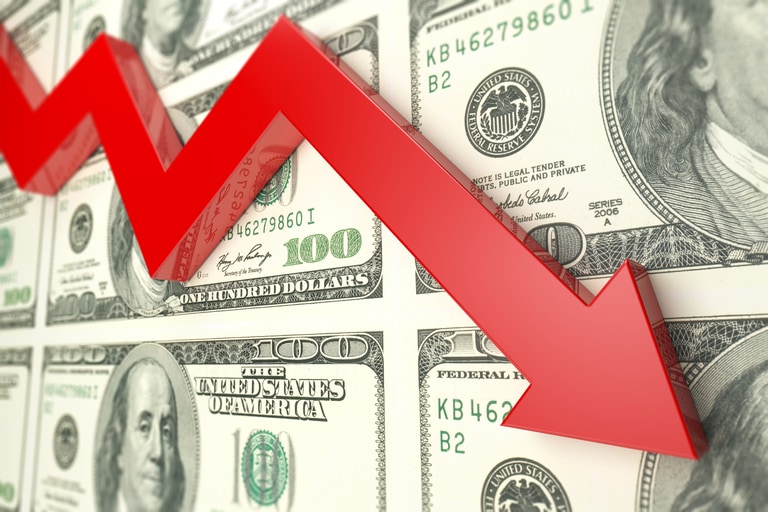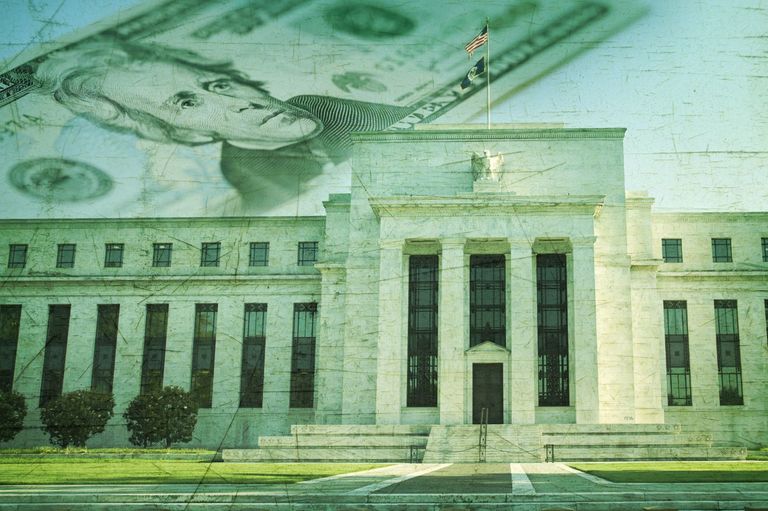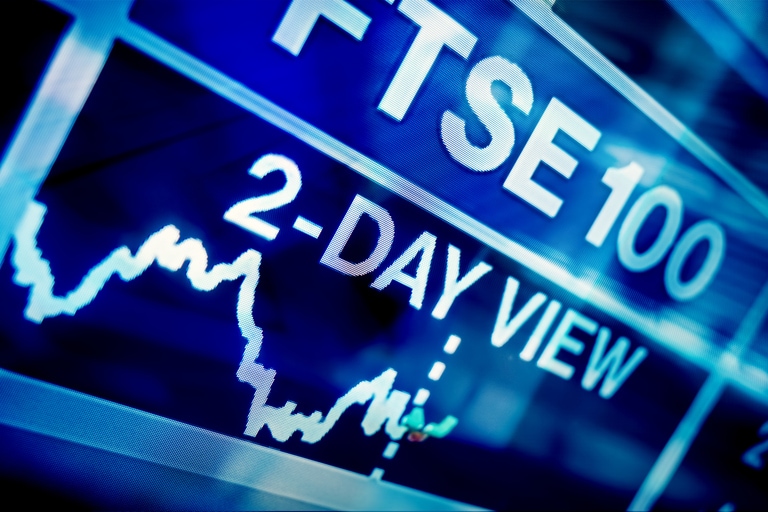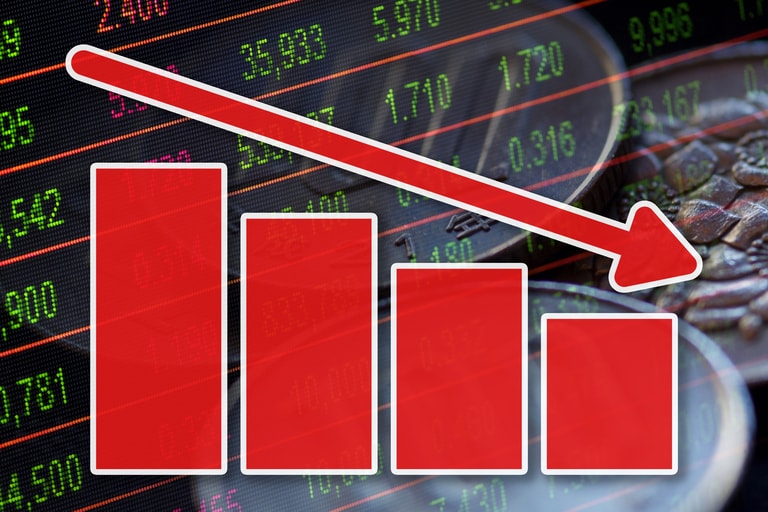Europe
The continued rise in global yields has put downward pressure on equity markets in Europe today. Not only are US 10-year yields closing in on their highest levels since 2008, but UK gilts already have, pushing above their October peaks, while German 10-year yields are closing in on their highs back in March. The move higher in long term yields appears to reflect a shift in the markets thinking and it's now less about how many more rate hikes are coming, and more about how long could we see rates staying at these sorts of levels.
The FTSE100 looks set for its 5th successive daily decline on the back of a combination of the higher yield scenario mentioned earlier, as well as several companies going ex-dividend, including Abrdn as it continues to slide in the wake of its disappointing H1 earnings update earlier this week. Other companies going ex-dividend today, include Imperial Brands, Anglo American, GSK and Berkeley Group Holdings, amongst others.
Today’s weakness has been led by BAE Systems whose shares are amongst the worst performers after agreeing a deal to buy US based Ball Aerospace for $5.5bn, a manufacturer of mission critical space and defence technology systems, across land, sea, and air.
The deal is expected to add about $2bn of extra annual revenue to BAE Systems turnover, with a potential growth rate of 10% over the next 5 years, as the company looks to diversify and enhance its expertise into optical systems, space payloads and scientific and tactical systems.
The weakness seems to be stemming from the idea that the outlay of $5bn will mean there is less to go around in terms of shareholder return in the short term. In the longer term however, the deal does appear to add value in a sector of the market that BAE doesn’t have exposure to while there is some overlap in other areas of the business.
We’ve also seen weakness in European tech as payment solutions company Adyen gets battered after missing expectations on its H1 revenues and margins. H1 revenues fell short at €739.1m while EBITDA margins slowed to 43%, well below the 48.6% expected.
On the plus side Admiral Group continues to edge higher after yesterday’s positive response to its H1 results, as well as special dividend, while we’ve also seen a bit of a rebound in the basic resources and energy sector, on the back of a modest rebound in metals and crude oil prices, with Rio Tinto and Glencore outperforming.
US
US markets are currently undergoing a more mixed session, with the Nasdaq 100 seeing most of today’s weakness, as higher yields press down on the part of the market, with it and the S&P500 both breaking below their respective 50-day SMA’s this week in what could be a key sign that further weakness could be on the way.
US weekly jobless claims slipped back from 250k to 239k, while continuing claims edged higher to 1716k.
Today’s laggards have included AMD, Intel, Netflix, Apple and Meta Platforms
The retail theme continued today for US markets with Walmart’s Q2 numbers.
Having seen Target report better than expected profit numbers yesterday, as well as a downgrade to their full year guidance, there was greater anticipation around the US biggest retailer, Walmart’s Q2 results, having seen the shares hit record highs earlier this week, which made the bar very high even in the event of a revenue and profits beat.
Walmart had a solid Q1 seeing decent growth in revenues as well as profits, beating the previous year. For Q2 the bar was set higher, and yet they have still managed to grow its revenues and profits from the previous year. Q2 revenues rose 5.7% to $161.63bn, while profits came in at $1.84c a share. Total same-store sales rose by 6.3%, with the retailer raising its forecasts for the full year.
Walmart says it expects Q3 profits to come in between $1.45 to $1.50c, while raising its full year profit forecast to between $6.36 to $6.46 from between $6.10 and $6.20 a share. Full year net sales were raised to between 4% and 4.5%.
FX
The US dollar has slipped back, despite the predominantly risk-off tone to today’s trading losing ground across the board, with the Norwegian Krone the best perfumer, on the back of a firmer oil price and a hawkish rate hike.
Today’s 0.25% rate hike from the Norges Bank, pushing rates to 4%, saying they expected to hike again in September.
The euro is edging higher even as governing council member Martins Kazaks, who has been one of the more hawkish members of the council suggested that further rate hikes would depend on upcoming data, raising the prospect that the ECB could well be done on the rate hike front. The eurozone economy, if you strip out the idiosyncrasies of the Irish GDP numbers, has been struggling since the end of last year and since then the headline rate has doubled to 4%. If August CPI continues to slow, then the risk of further divisions on the Governing council are likely to become more apparent in the coming weeks.
After 3 days of losses, crude oil prices are seeing a modest rebound from 1-week lows as markets try to draw a line between how strong future Chinese demand is likely to be, against a backdrop of tighter supply. If, as suggested yesterday, China is buying lots of Iranian oil at discounted prices then their appetite for higher priced Brent could well diminish.
Gold prices are continuing to get compressed by the move higher in yields as the market shifts its thinking on longer term premiums on rate markets. With long term yields heading back to 2008 levels and inflation looking as if it may be coming down, the rationale for owning gold could well diminish further.
Volatility
With recession fears in the US continuing to abate, gold prices remain under pressure. That in turn is impacting the valuations of miners of the precious metal, something which is being reflected in CMC’s proprietary basket of stocks from the sector. The US Gold cohort is trading at five-month lows, with one day vol coming in at 40.05% against 34.93% on the month.
Sticking with the US, the Dow Jones 30 stood out as being the most active equity index on Wednesday. Investors digested the Federal Reserve meeting minutes and appeared to conclude that more rate hikes are still to be seen, something that took a toll on the underlying as it fell back to levels not seen in almost a month. One day vol printed 12.23% against 10.13% for the month.
That news from the Fed also kept greenback trades active, with AUD/USD proving to be the standout once again. The pair is trading at levels not seen since last November and one day vol printed 12.92% against 11.21% for the month. It was a similar story for the Kiwi/US trade, coming in at 12.17% on the day and 11.29% on the month.
Finally, a mixed bag of EIA numbers in terms of oil distillate stocks and production resulted in a modest uptick in activity for gasoline prices, reversing declines seen earlier in the week. One day vol on RBOB Gasoline stood at 32.55% against 31.07% on the month.
Disclaimer: CMC Markets is an execution-only service provider. The material (whether or not it states any opinions) is for general information purposes only, and does not take into account your personal circumstances or objectives. Nothing in this material is (or should be considered to be) financial, investment or other advice on which reliance should be placed. No opinion given in the material constitutes a recommendation by CMC Markets or the author that any particular investment, security, transaction or investment strategy is suitable for any specific person. The material has not been prepared in accordance with legal requirements designed to promote the independence of investment research. Although we are not specifically prevented from dealing before providing this material, we do not seek to take advantage of the material prior to its dissemination.







